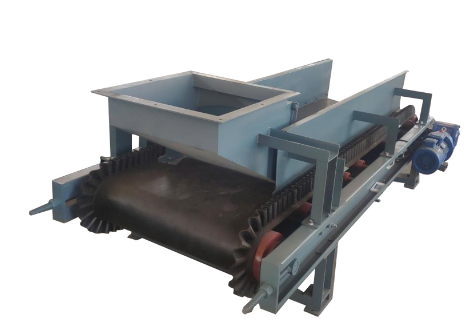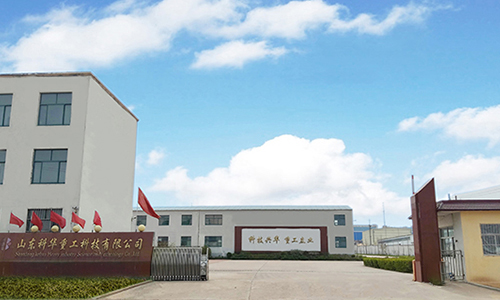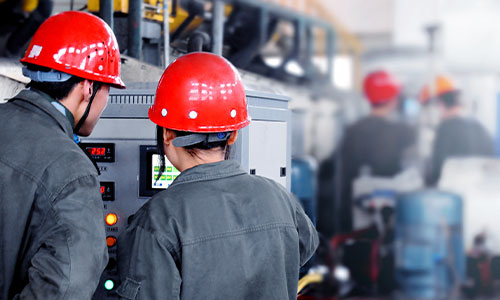How much do you know about the dosing machine.
The quantitative feeder plays a very important role in the batching system of the cement industry. The proper use of the quasi-quantitative feeder can increase the output of the product, ensure the quality of the product, effectively reduce the production cost and expand the sales market. Therefore, how to make good use of the quasi-quantitative feeder is an important topic. Kehua Heavy Industry is a manufacturer of raw quantitative feeders, reciprocating coal feeders, screw scales, and pipeline iron removers. The company was founded in 1994. It is a domestic high-quality manufacturer. The company is located in Linqu, Shandong. New and old customers are welcome to visit the factory.

First of all, in terms of design, the distance from the adjustment baffle of the feeding port of the quantitative feeder to the weighing roller should not be less than 1 meter, which can ensure that the material has a stable area before entering the effective weighing section for weighing. There should not be any changes in the material within the zone. It can be said that the center distance between the front and rear rollers of the belt of the quantitative feeder should not be less than 3.5 meters in design. Only by adopting such a standard can the material of the quantitative feeder be stable during operation. Otherwise, the stability cannot be guaranteed, and the measurement cannot be accurate. Shaanxi Fufeng Company's first-line raw meal limestone quantitative feeder is an example. In the design, there should also be a standard for the height of the quantitative feeder. It is unreasonable that the height is less than 60 cm and there is no discharge cone below. The reason is that the height of the quantitative feeder is too low, and the running material and the material that occurs during operation are stored under the belt and cannot be cleaned in time. Especially, the material stored under the drum is piled up for a long time to form solidification, which is more likely to rub against the belt and cause quantitative feeding. The speed of the feeder fluctuates, the belt is deviated, and the belt is worn, resulting in inaccurate measurement. All the quantitative feeders in the cement batching station of Shaanxi Jingyang Company are typical examples. Therefore, from the perspective of safety, the most reasonable height of the quantitative feeder is not less than 80 cm, which is conducive to the on-site maintenance personnel to timely and safely handle the feeding and feeding of the quantitative feeder. A guarantee of accuracy. One should also pay attention to the design of the quantitative feeder, that is, the layout of each quantitative feeder on the site should be reasonable, and there should be a reasonable distance between the equipment and the equipment, which cannot affect each other. There should be a safe passage for each quantitative feeder site, which is convenient for inspection and daily maintenance. Otherwise, it can't be used well. For example, in the No. 7 and No. 8 cement mill batching station of Tongchuan Jidong Cement Company, 8 quantitative feeders are arranged together to influence each other. Without a safe passage, inspection and daily maintenance cannot be carried out. The results of use are also inaccurate, which fully proves that the installation environment of the quantitative feeding is unreasonable, and it also plays a very important role in using the quasi-dosing feeder well.

 ABOUTShandong Kehua Heavy Industry Technology Co., Ltd., formerly known as Linqu County Kehua Automatic Control Equipment Factory, was founded in April 1993. On January 10, 2007, the company changed its name to Weifang Kehua Automatic Control Equipment Co. Ltd
ABOUTShandong Kehua Heavy Industry Technology Co., Ltd., formerly known as Linqu County Kehua Automatic Control Equipment Factory, was founded in April 1993. On January 10, 2007, the company changed its name to Weifang Kehua Automatic Control Equipment Co. Ltd PRODUCTThe company's main products are: electronic belt scales, spiral scales, loss-in-weight scales, quantitative feeders, batching systems, hoists and other heavy machinery and equipment. Products are widely used in chemical, cement, steel, mining, thermoelect
PRODUCTThe company's main products are: electronic belt scales, spiral scales, loss-in-weight scales, quantitative feeders, batching systems, hoists and other heavy machinery and equipment. Products are widely used in chemical, cement, steel, mining, thermoelect CONTACTIt is the eternal pursuit of the company to create famous brand products, establish a first-class enterprise, and lead the mainstream of the industry.
CONTACTIt is the eternal pursuit of the company to create famous brand products, establish a first-class enterprise, and lead the mainstream of the industry. NEWSThe company adheres to the operating principles of leading technology and winning by quality, and has close cooperative relations with many colleges and universities and scientific research institutions.
NEWSThe company adheres to the operating principles of leading technology and winning by quality, and has close cooperative relations with many colleges and universities and scientific research institutions.

